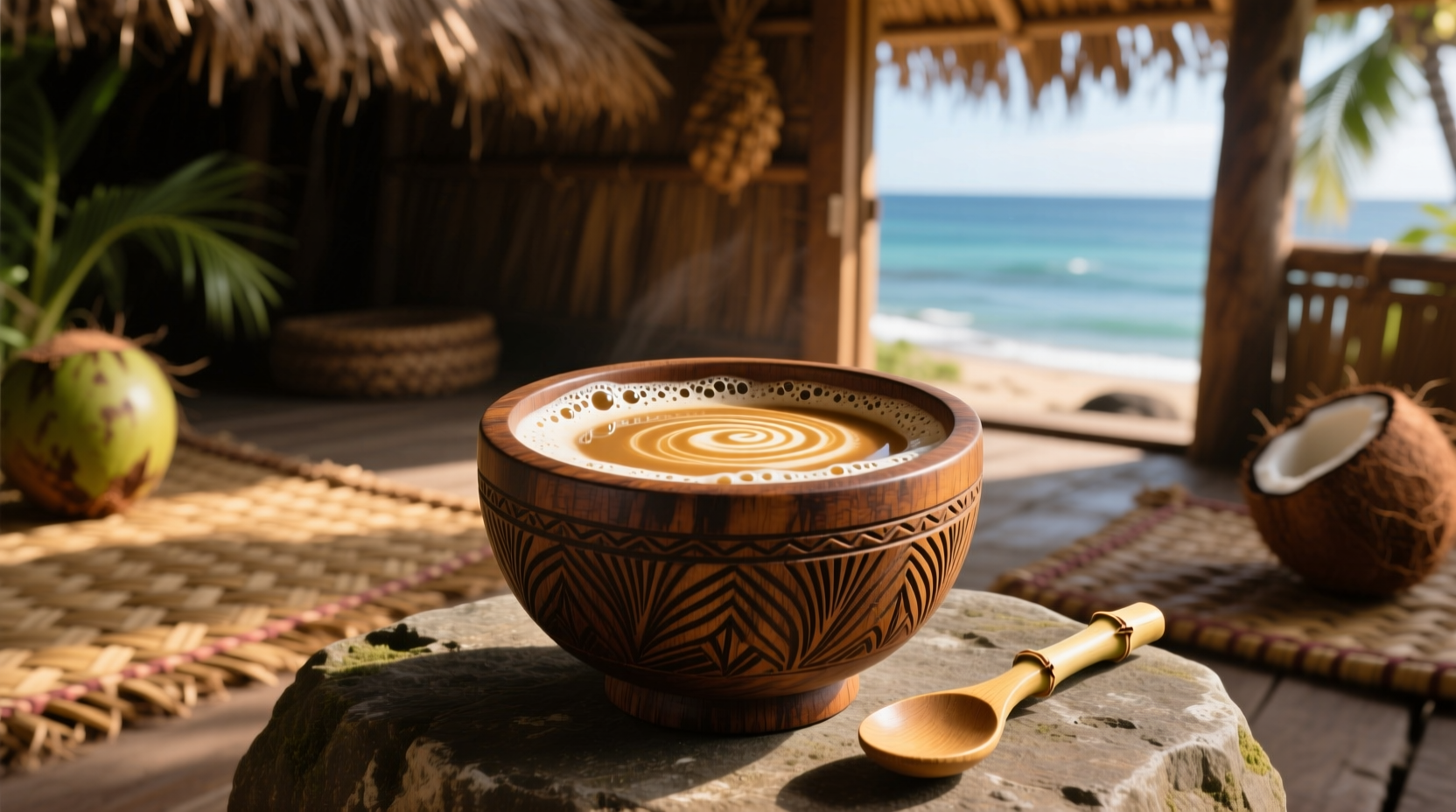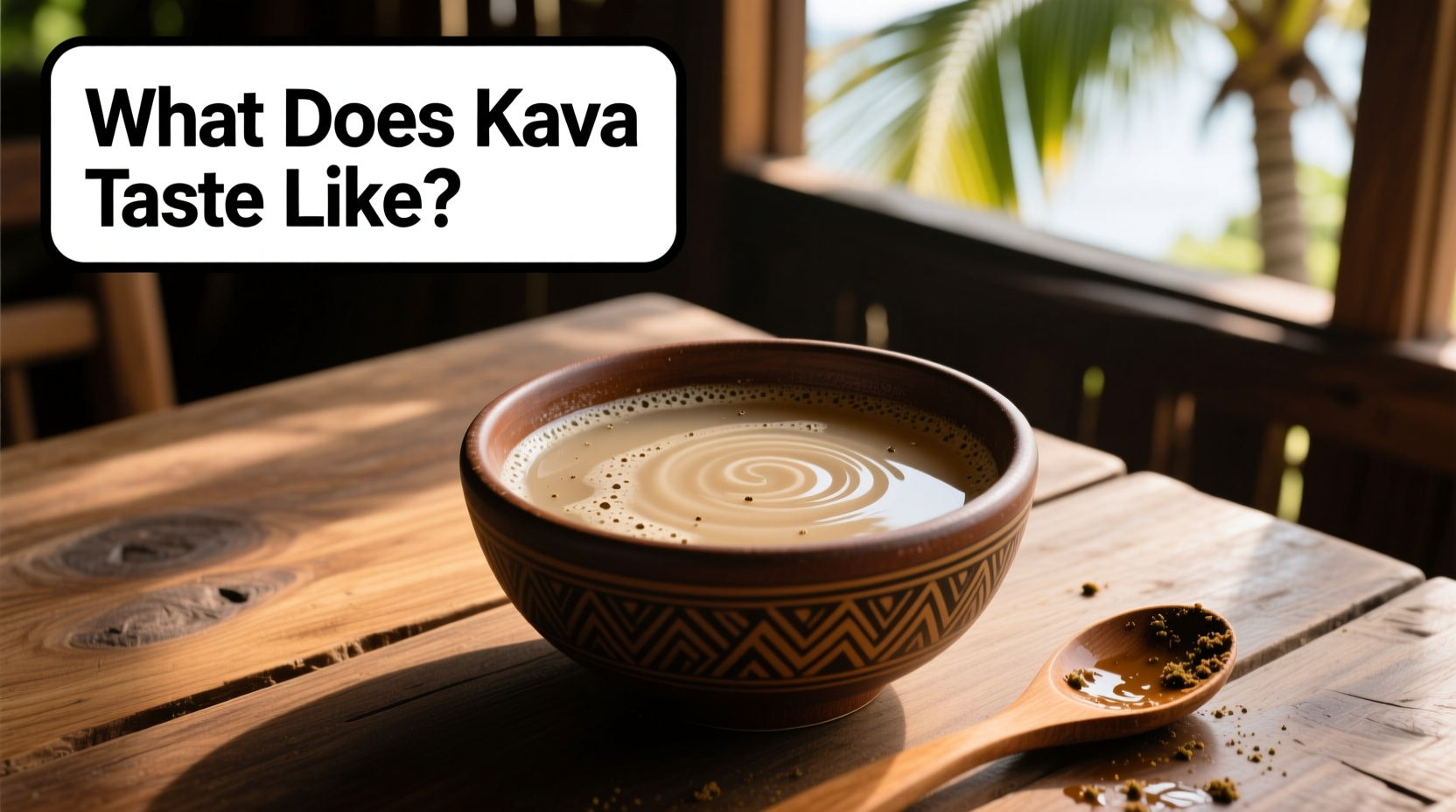Ever wondered what kava actually tastes like before taking your first sip? You're not alone. Many first-time kava drinkers are surprised by its unique flavor profile that defies easy comparison. Understanding exactly what does kava taste like can help you prepare mentally and even enhance your experience with this traditional Pacific beverage.
Your First Kava Encounter: Setting Expectations
When you take your first sip of kava, expect an immediate earthy sensation that coats your mouth. Unlike coffee or tea, kava doesn't offer familiar comforting warmth. Instead, it delivers a complex sensory experience that many find challenging at first. The initial taste hits with:
- A distinct peppery quality that tingles the tongue
- Deep earthy notes reminiscent of forest soil after rain
- A subtle bitterness that builds as you swallow
- A unique numbing sensation that affects the mouth and throat
Don't be alarmed if your first reaction is surprise or even mild discomfort. This is completely normal. Most experienced kava drinkers report that the taste becomes more acceptable—and sometimes even enjoyable—after several exposures. The key is understanding what to expect and approaching it with the right mindset.
Breaking Down Kava's Complex Flavor Profile
To truly understand what kava root taste like, we need to examine its flavor components separately. Kava's taste isn't monolithic but rather a layered sensory experience that evolves from first contact to aftertaste.
The Earthy Foundation
Kava's dominant characteristic is its earthiness. This isn't just a mild earthy note—it's a pronounced flavor that dominates the experience. Scientific analysis shows this comes from kavalactones interacting with soil minerals during growth. The earthiness varies by cultivar:
- Noble kava varieties: Rich, complex earthiness with subtle sweetness
- Tudei varieties: Stronger, sometimes muddy earthiness
- Fiji kava: Often described as having a clean, forest-floor earthiness
- Vanuatu kava: Tends toward a richer, almost mushroom-like earthiness
Bitterness and Peppery Notes
The bitterness in kava comes primarily from flavokawains and other compounds. Unlike the sharp bitterness of coffee, kava's bitterness is more herbal and rounded. Many traditional Pacific Islanders consider this bitterness a positive quality, associating it with potency.
Simultaneously, you'll notice a peppery quality that creates a mild numbing sensation. This isn't just psychological—kavalactones actually interact with nerve receptors, creating this distinctive mouthfeel. The numbing effect typically starts at the tip of the tongue and spreads toward the throat.
Factors That Influence Kava's Taste Experience
Understanding why does kava taste earthy requires examining the variables that affect its flavor profile. Several factors dramatically impact what you'll experience:
| Factor | Impact on Taste | Best Practice |
|---|---|---|
| Water temperature | Hot water extracts more bitterness; cold water produces smoother taste | Use room temperature or slightly cool water for milder flavor |
| Straining method | Multiple straining reduces earthy particles; single strain preserves traditional texture | Double-strain through muslin for cleaner taste |
| Root quality | Fresh, noble varieties taste cleaner; older roots develop stronger earthiness | Source from reputable suppliers with recent harvest dates |
| Preparation time | Shorter mixing = milder flavor; longer = stronger extraction | 5-7 minutes mixing provides balanced extraction |
This comparison helps explain why your kava taste description might differ from others' experiences. Two people drinking "the same" kava can have dramatically different taste experiences based on these variables.

How Kava Compares to Familiar Beverages
When trying to describe what does kava taste like to someone who's never tried it, comparisons help. Based on sensory analysis studies from the University of the South Pacific's ethnobotanical research, kava shares characteristics with several familiar beverages but creates a unique profile:
- Green tea - Similar astringency and slight bitterness, but kava lacks tea's grassy notes
- Unsweetened cocoa - Comparable earthiness, but kava has more peppery notes
- Muddy water - An unfortunate but common comparison due to the sediment
- Black pepper infusion - Captures the numbing quality but misses earthiness
Interestingly, research from the Journal of Ethnopharmacology indicates that cultural context significantly affects taste perception. Participants in traditional Pacific settings often describe kava as "pleasant" or "refreshing," while Western participants in clinical settings frequently use terms like "bitter" and "unpleasant." This suggests mindset plays a crucial role in your kava sensory experience.
Making Kava More Palatable: Practical Strategies
If you're wondering how to make kava taste better, several evidence-based approaches can help. These methods respect traditional preparation while making the experience more accessible for newcomers:
Temperature Control
Serving kava slightly chilled (not cold) can significantly reduce the perception of bitterness. The University of Hawaii's kava research program found that temperatures between 60-65°F (15-18°C) create the most balanced flavor profile for Western palates.
Strategic Pairings
Rather than masking kava's flavor (which defeats part of its traditional purpose), try these complementary pairings:
- Follow with a slice of citrus (lime or lemon) to cleanse the palate
- Enjoy with coconut water to balance the earthiness
- Pair with mild tropical fruits like banana or papaya
Gradual Acclimation
Traditional Pacific Islanders often introduce children to kava through diluted versions. You can adapt this approach by:
- Starting with weaker preparations (more water, less root)
- Gradually increasing strength as your palate adjusts
- Drinking regularly rather than occasionally to build familiarity
Avoid common mistakes like adding sweeteners or milk, which can interfere with kava's effects and traditional experience. As noted in anthropological studies from the Fiji Institute of Medicine, altering kava's natural flavor profile often diminishes its cultural significance and may affect absorption.
The Cultural Context of Kava's Flavor
Understanding traditional kava flavor characteristics requires appreciating its cultural context. In Pacific Island nations where kava originates, the earthy, bitter taste isn't viewed negatively—it's considered integral to the experience. The bitterness symbolizes kava's potency and connection to the earth.
Traditional preparation methods emphasize preserving kava's natural flavor profile. The ceremonial aspect of kava drinking creates a mindset where the taste becomes part of the ritual rather than something to endure. This cultural framing significantly influences how consumers perceive kava drink flavor profile.
When Taste Indicates Quality
Not all kava tastes the same, and sometimes the flavor provides important quality indicators. According to guidelines from the Vanuatu Agricultural Department:
- Excessively sour or fermented taste may indicate improper storage
- Chemical or plastic-like notes suggest contamination
- Complete lack of numbing sensation might indicate low kavalactone content
- Overpowering moldiness suggests moisture damage
Learning to distinguish between authentic earthy flavor and problematic tastes is crucial for safety and enjoyment. Reputable suppliers follow strict quality control measures documented by the Pacific Islands Trade and Investment Commission.











 浙公网安备
33010002000092号
浙公网安备
33010002000092号 浙B2-20120091-4
浙B2-20120091-4